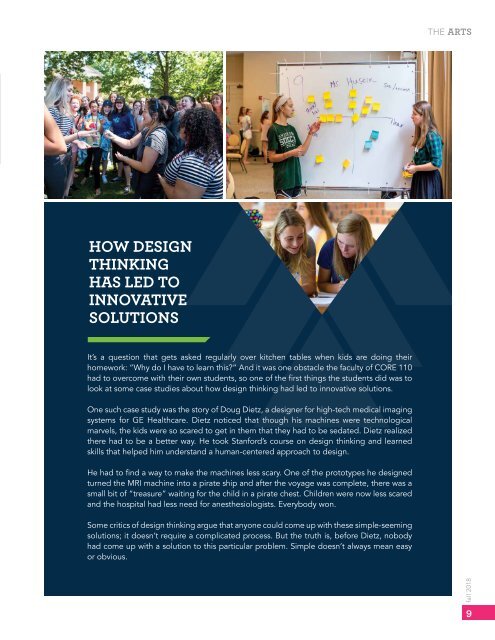Sweet Briar College Magazine - Fall 2018
You also want an ePaper? Increase the reach of your titles
YUMPU automatically turns print PDFs into web optimized ePapers that Google loves.
THE ARTS<br />
HOW DESIGN<br />
THINKING<br />
HAS LED TO<br />
INNOVATIVE<br />
SOLUTIONS<br />
It’s a question that gets asked regularly over kitchen tables when kids are doing their<br />
homework: “Why do I have to learn this?” And it was one obstacle the faculty of CORE 110<br />
had to overcome with their own students, so one of the first things the students did was to<br />
look at some case studies about how design thinking had led to innovative solutions.<br />
One such case study was the story of Doug Dietz, a designer for high-tech medical imaging<br />
systems for GE Healthcare. Dietz noticed that though his machines were technological<br />
marvels, the kids were so scared to get in them that they had to be sedated. Dietz realized<br />
there had to be a better way. He took Stanford’s course on design thinking and learned<br />
skills that helped him understand a human-centered approach to design.<br />
He had to find a way to make the machines less scary. One of the prototypes he designed<br />
turned the MRI machine into a pirate ship and after the voyage was complete, there was a<br />
small bit of “treasure” waiting for the child in a pirate chest. Children were now less scared<br />
and the hospital had less need for anesthesiologists. Everybody won.<br />
Some critics of design thinking argue that anyone could come up with these simple-seeming<br />
solutions; it doesn’t require a complicated process. But the truth is, before Dietz, nobody<br />
had come up with a solution to this particular problem. Simple doesn’t always mean easy<br />
or obvious.<br />
fall <strong>2018</strong><br />
9

















